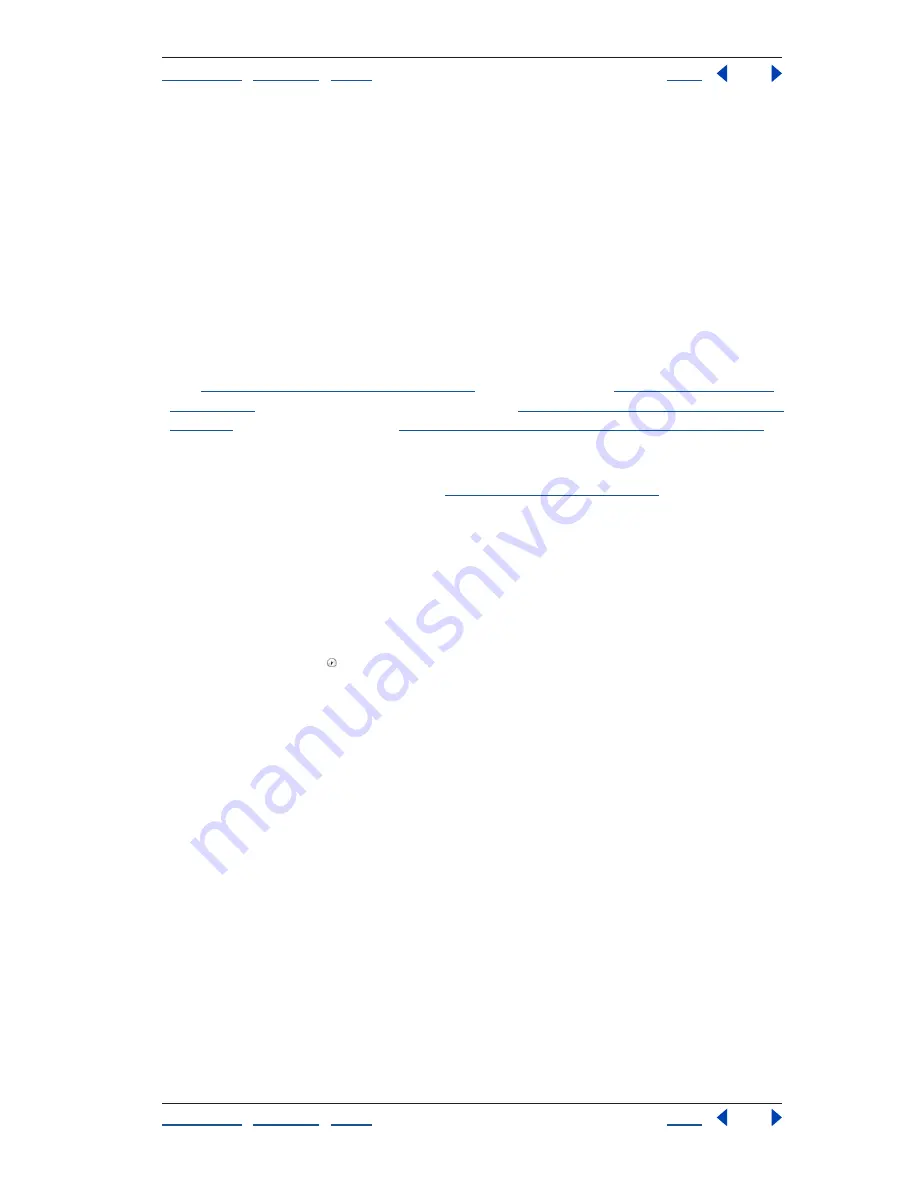
Using Help
|
Contents
|
Index
Back
44
Adobe Premiere Pro Help
Working with Projects
Using Help
|
Contents
|
Index
Back
44
•
The Project window is where you import, organize, and store references to clips. It lists
all source clips that you import into a project, though you don’t have to use every clip
you import. The Project window is also where you organize batch lists of offline files to
be captured and where clips are listed after you capture them.
•
The Monitor window can include the Source and Program views. Use the Source view to
see an individual video clip and the Program view to see the current state of the video
program being edited in the timeline. You can also add the Effect Controls window as a
tab in the Source view.
•
The Timeline window provides a schematic view of your program, including all
sequences, video, audio, and superimposed video tracks. Changes you make in this
window appear in the Program view.
Adobe Premiere Pro also provides specialized windows for tasks such as capturing video
(see
“Using the Capture window” on page 64
), creating titles (see
“Setting up a new title”
on page 194
), applying and controlling effects (see
“About the Effect Controls window” on
page 237
), and mixing audio (see
“Working with the Audio Mixer window” on page 173
).
When you exit Adobe Premiere Pro, the positions of windows and palettes are saved with
the project file. In addition, you can create and save named window layouts as a
workspace available to any project. (See
“Using workspaces” on page 45
.)
Using window and palette menus
In Adobe Premiere Pro, most windows and palettes include menus that appear by clicking
a button. In addition, all windows have context menus, the content of which depends on
the current task or mode. The commands found in window menus, palette menus, and
context menus are specific to individual windows or palettes.
To open window and palette menus:
Click the Menu button near the upper right corner of the window or palette.
To open window context menus:
Right-click in the window.
Using tabs in windows
Some Adobe Premiere Pro windows contain tabs that you can click to view the contents in
that window. These tabs can also be dragged away, forming separate windows. In Adobe
Premiere Pro, you can combine tabs in the following ways:
•
The Monitor, Timeline, and Audio Mixer windows contain tabs that represent multiple
sequences. Clicking a tab activates that tab’s sequence in all three windows. The
Timeline window tabs representing multiple sequences can be dragged away to form
separate Timeline windows for each sequence.
•
The History and Info palettes can be combined as a group of tabs.
•
The Effect Controls window can be displayed as a tab within the Project window or
within the Source view of the Program window.
Use the following techniques to reorganize windows using tabs:
•
To rearrange and separate a group of tabs, drag the tab for that window.
•
To group a tab with another tab or window, drag its tab to another window. Note that
some tabs can be grouped only with certain other tabs, as noted above.






























